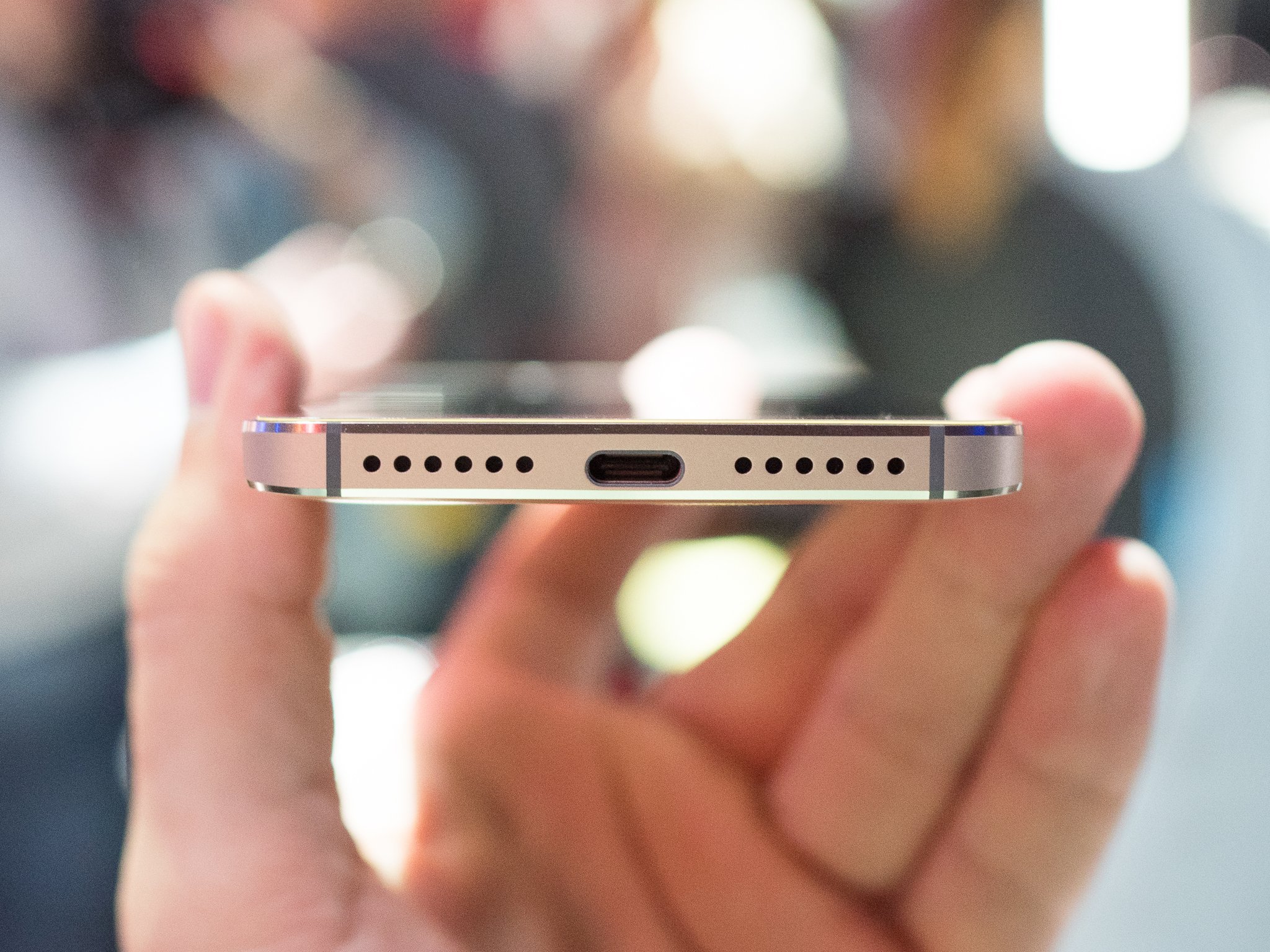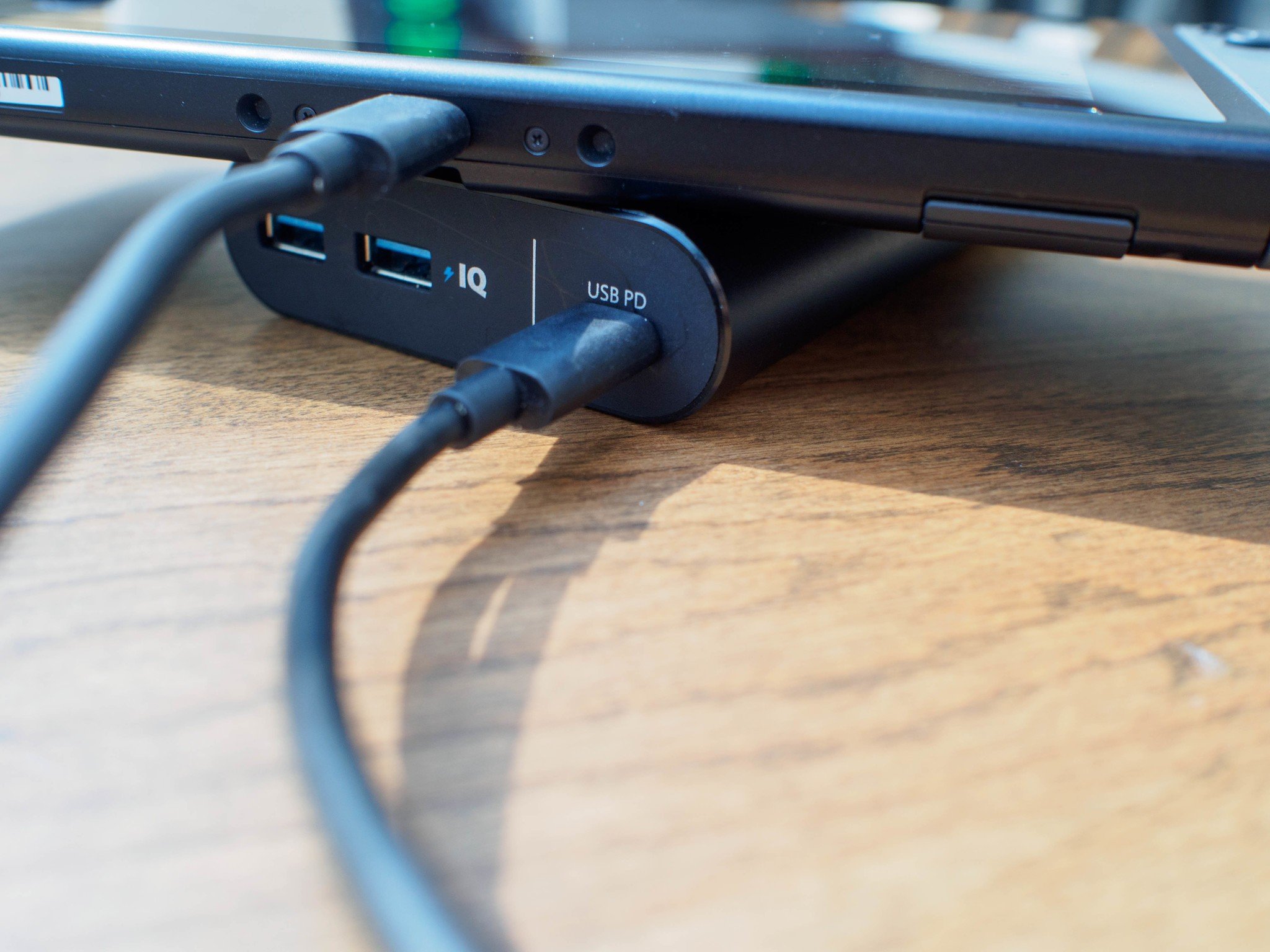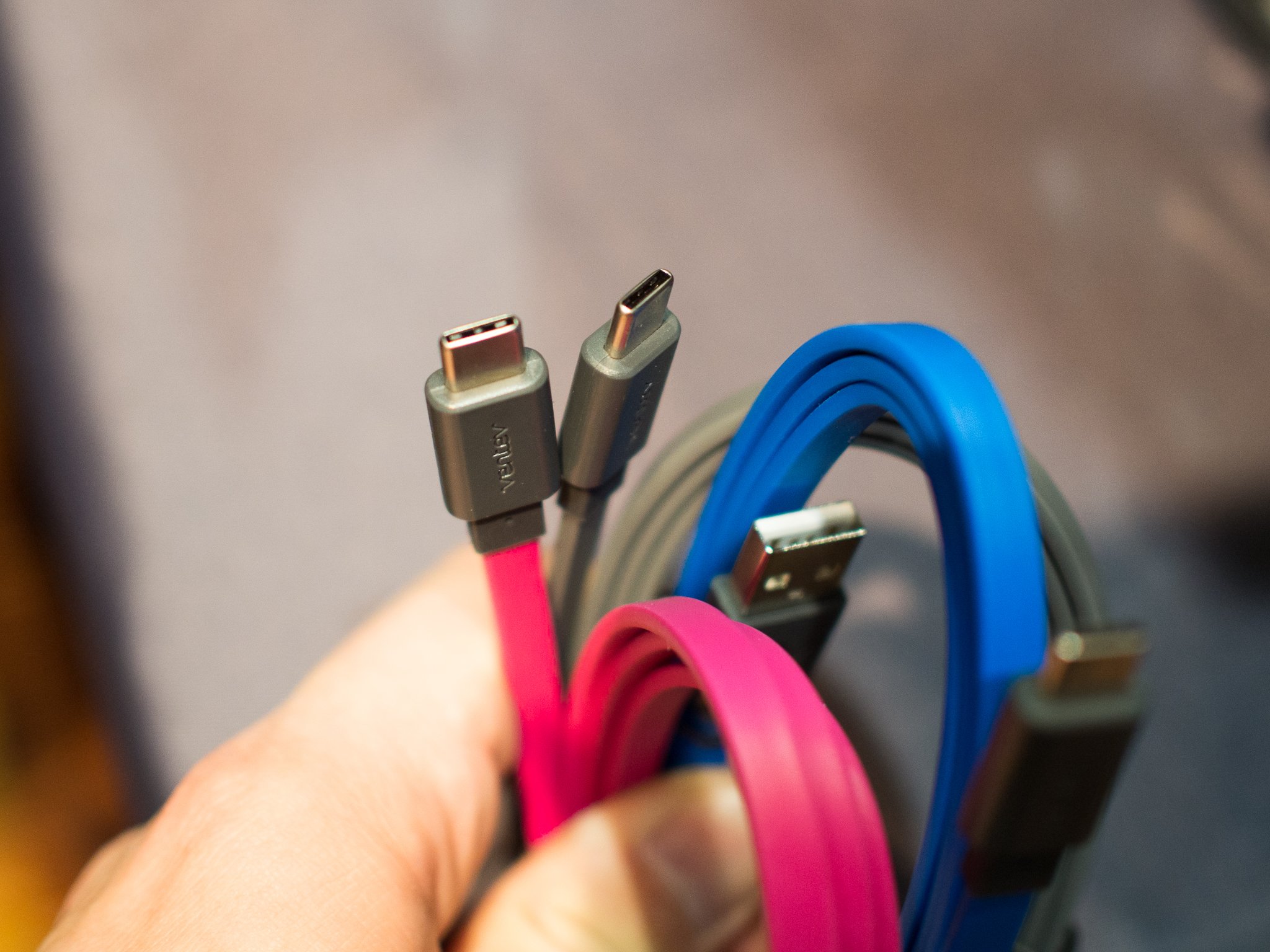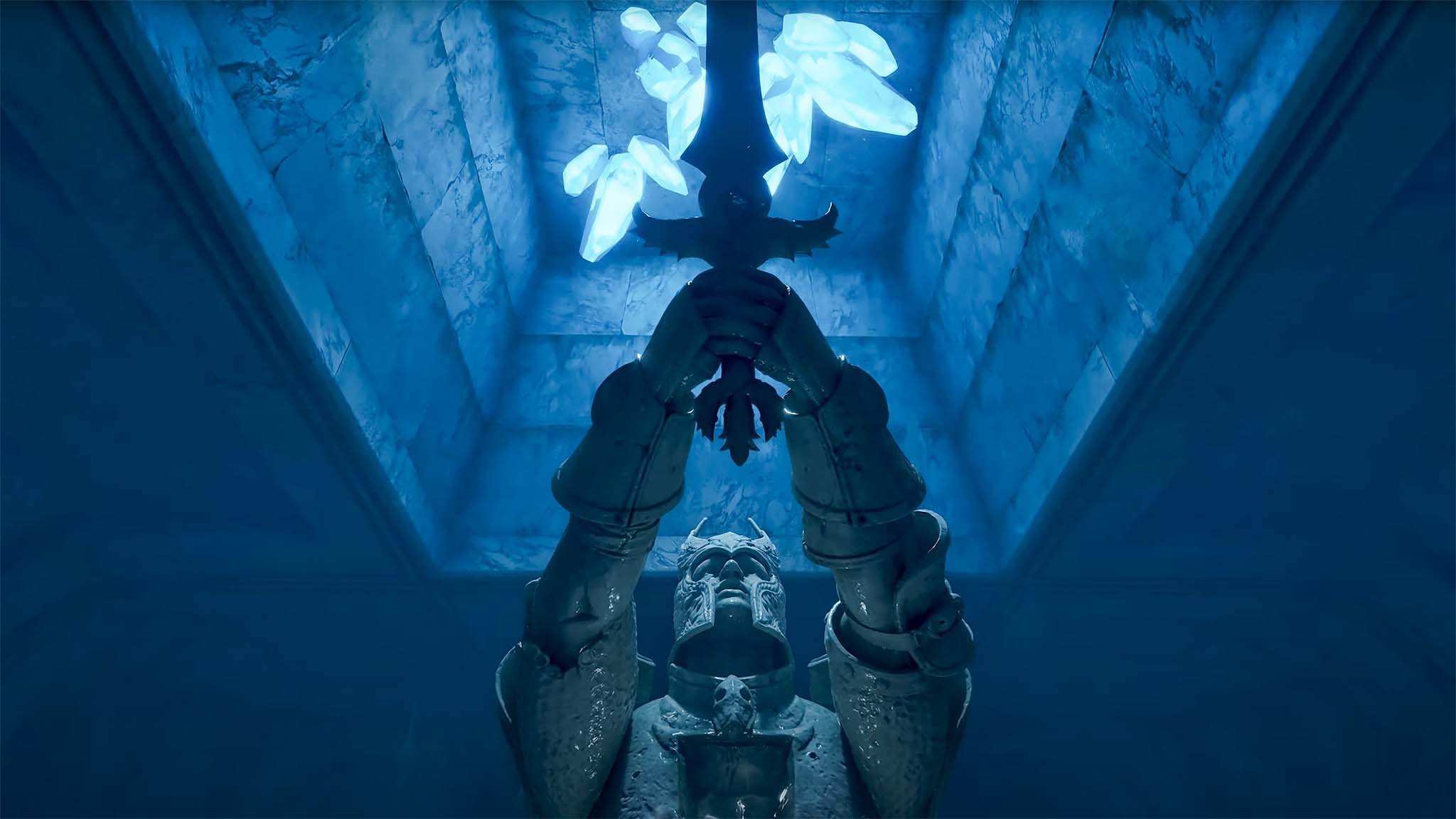USB-C cables and adapters, and what you need to know when buying them
Buying a cable shouldn't be difficult. It doesn't have to be if you follow these simple tips.

USB standards have a long history, and they've gone through plenty of changes since first implemented in 1996. The premise behind them is providing a way to standardize cables, connectors, communication, and power transfer between electronic devices. Those are some pretty high goals to reach, but the specifications do just that, and the rest is up to the manufacturers of all the products that use them.
Some of the first equipment to use USB was the really old, brightly colored iMac G3 (I had a Tangerine Rev. 3 model) and, oddly enough, speakers. Trust me when I say things were not even close to plug-and-play, and really, it stayed that way for a few years until operating systems caught up. But, those speakers and that orange iMac would still be able to communicate with any device made today provided it didn't do something to break legacy USB support. USB was designed to be the one standard that does it all, and that's pretty much how it all worked out.
You can think of USB-C as a set of rules to make smarter USB plugs, cables, and connectors.
The USB-C specification is one of those USB standards. Released in August 2014, it's a set of rules for a small 24-pin reversible plug connector to use with existing USB systems. Some of the connections inside are used to tell which way a cable is plugged in; others are used to transfer data or power, and some are used as a dedicated connection to allow both sides to talk to each other. There are also connections and software rules that make sure the right amount of electrical current is being sent to safely charge or power one device from the other using the Power Delivery specifications. Though it was released in tandem with the USB 3.1 specification, USB Type-C rules are only for the physical connections — data speeds are covered by other rules. You can think of USB-C as a set of rules that only exist to make smarter USB plugs, cables, and connectors.
Power Delivery is one of the best features of the USB specification and also the part that makes buying the right cable or adapter important. Technically, Power Delivery 2.0 is a separate standard and applies to USB Type-A, USB Type-C, and Micro-USB but when you're dealing with normal consumer-grade devices you will only see it through USB-C. That's great for safety reasons; if you thought finding the right USB-C cable was a mess, try to find a "USB Type-A to Micro-USB PD 5A" cable.
With USB-C and Power Delivery, all connected devices can send power out as well as receive power in. You can charge a phone or set of headphones or anything else that uses the USB-C spec with another phone that uses the USB-C specs (I do it all the time because the Galaxy S8+ has a decently-sized battery). You could also rig up cables that can pull power from several phones and charge the battery in a MacBook if you wanted to. We tried that once, too.
Buying the right cable is a must or you risk damaging the things you're plugging in, or even starting a fire.
USB-C with Power Delivery (PD) also includes a native way to "fast-charge" one USB-C PD-certified device safely from another using that dedicated connection channel mentioned above. While the previous version of USB power standards allowed for five volts and 2.5 watts (USB 2.0) or 4.5 watts (USB 3.0), the new PD specs allow using up to 20 volts and 100 watts. The tiniest bit of current could potentially cause a fire or harm you under the right circumstances, but 100 watts of power is dangerous even in the best situation. We're talking amounts of electricity that can cause serious damage if not used the right way.
It's also an open specification that anyone can use and alter to better suit their needs. This means not everything using USB-C is the same and buying the right cable is a must or you can risk damaging the things you're plugging in or even starting a fire.
Get the Windows Central Newsletter
All the latest news, reviews, and guides for Windows and Xbox diehards.
More: New USB Type-C Authentication spec can stop faulty cables before they do damage
But don't fret. You don't need to know all the rules in the USB specs or how it can tell which way it's plugged in or any of the other geeky details to make the right choice if you follow a few easy tips when you're buying a cable or connector. These three tips will help you get exactly what you need.
Know what you need

Remember when we said the USB-C spec was an open standard that companies can change to better suit their needs? Phone manufacturers are doing that, and sometimes the cables and chargers they sell and use aren't compatible with all the rules. Qualcomm's Quick Charge is really popular, and phone makers can use a USB-C connector that isn't fully compatible with the USB-C PD standards. Other companies have their own proprietary fast charging methods, and you'll need a cable that's compliant with their equipment, too.
Not everyone is using USB-C in a standards compliant way, so be mindful of "quick charge" methods.
If your phone has a USB-C port you can look at the papers it came with or online to see if it uses the port in a way that's not "standards compliant." Terms like "Quick Charge" or "Turbo Charge" or any other trademarked fast charging method are a dead giveaway. The list of devices doing this is always changing but we've seen phones from every manufacturer that aren't fully standards compliant. That means you shouldn't use the charger, cable, or any adapter that came with them for any other piece of equipment without making sure they are compatible.
A third-party high-quality cable that follows the USB-C PD specifications can be safely used with phones that use other quick charging methods, but don't go the other way and use cables designed for Qualcomm Quick Charge or any other fast charging method without checking to see if they are standards compliant.
The best thing to do is use the cable, charger and any adapters that came with your phone and order direct from the manufacturer if you need a spare or replacement. We know that's not feasible for most of us so make sure you check before you plug anything in.
Buy a reputable brand

We've all seen ultra-cheap USB cables online or at the drug store and were tempted to buy them. While still not the best idea in the world, most of the time that was fine with the older USB Type-B micro standard used on most phones and other gadgets. Low voltage and low current were sent on the same pins every time, and the cable only connected in one direction. That's changed, even for the older Micro-USB "standards" because of the need for faster charging.
Don't buy a USB-C cable just because it's cheap.
When you're buying a USB-C cable or a connector, be leery of companies you've never heard of and stick with names that are generally trusted. This is the best way to make sure the cable is using the appropriate size wires inside, the connector is properly constructed and the right resistance is being used. All three of these things are important when you're sending more current over tiny wires, and cheaply-made cables that aren't using the right components can be dangerous.
Don't blindly buy a cable because it's a "name-brand" though, as we've seen some that aren't built correctly. That's where the next tip comes in ...
Make use of reviews or forum posts
There are still a lot of cables that have a USB-C plug on one end and a "regular" USB plug on the other that are non-compliant in a dangerous way.
Besides using the appropriately sized wire and properly shielding the cable and connector ends, a "regular" USB to USB-C cable requires a 56k Ohm resistor to act as what's called a "pull-up" on the VBUS (pins 2 and 17 if you're curious) power channel. This is one of the things you need so a USB-C device can let a power source know how much current to send and when to stop sending it. Using a cable with the wrong size wire will damage the wire. Using a cable with the wrong size resistor can damage the things plugged into each end or start a fire. If one of those things plugged in is your phone you certainly don't want it to be damaged and nobody likes a house fire.
You can test the resistance of a cable yourself, or you can see what someone who already did has to say.
This isn't just a problem with bargain-bin cables, either. Some very high-profile companies have had (or still have) issues with their cables. If you're the type who has fun doing things like testing continuity and resistance of USB cables, that's awesome and you should test everything you buy then share your results. If you're not, you can do a quick google search of the brand or part number and see what those people have to say.
I'll do my part here since I do like to do things like test cables. These Anker brand 6-foot cables are advertised as being compliant, and I've cut one open to make sure. They will work to fast charge every device that uses the USB-C PD standards, as well as work with Qualcomm's Quick Charge 3 and Motorola's Turbo Charge. I am unable to test them with Dash Charge but see no reason why they wouldn't work as advertised. The best part is that they're inexpensive and you can buy a handful of them right now and not have to worry about cables until you change phones.
USB-C isn't dangerous. It's capable of safely delivering relatively high current as long as the proper equipment is used, and offers a lot of benefits because of the way it can communicate with other compliant devices. What started out by powering small speakers in the late twentieth century is now robust enough to talk with the instruments used to make the music that comes through them or even the bus the band drives to concerts. What's important is that you're using the proper cables and adapters, though.
Just follow these tips, and you'll be fine.
I'm an RHCE and Electrical Engineer who loves gadgets of all kinds. You'll find my writings across Mobile Nations and you can hit me on Twitter if you want to say hey.

